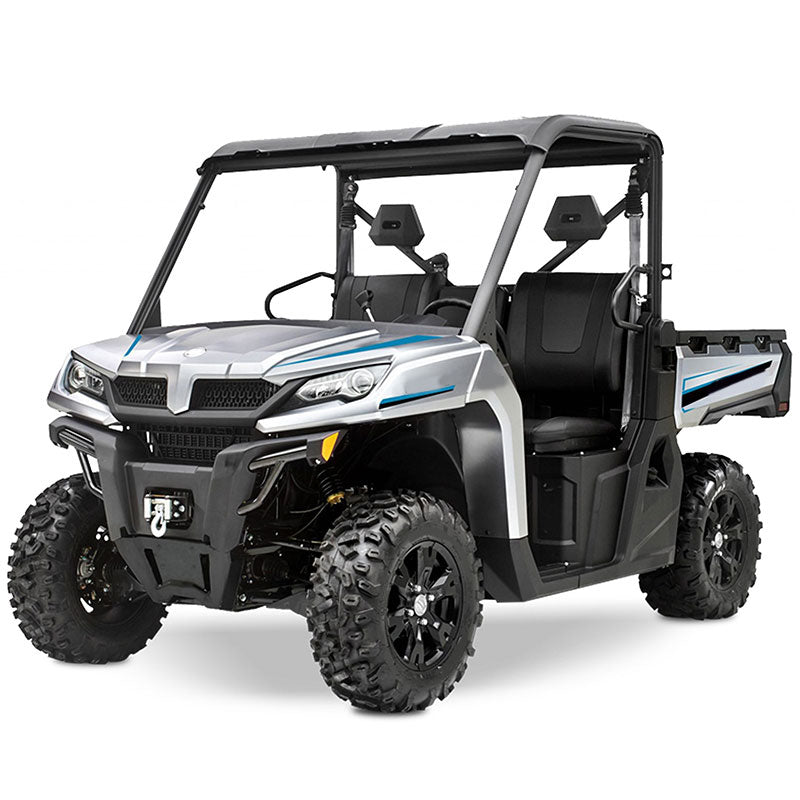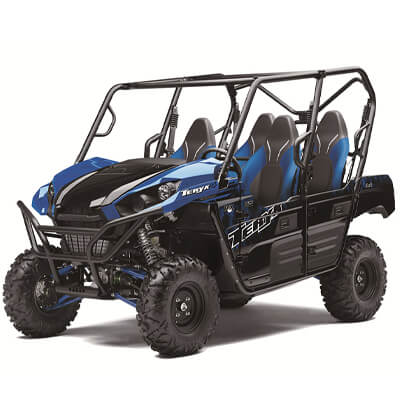How Much Does a Polaris RZR Weigh?

We’re big fans of the Polaris RZR here at StarknightMT, and if you’ve been considering getting one to take on your next off-roading adventure, one of the first questions that might come to mind is: How much does the Polaris RZR weigh?
It’s smart of you to ask, considering how big of a role it can play in how your side-by-side handles and how easy it is to transport.
Over the years, the RZR series has earned a badge of honor as one of the best and most versatile lines of UTVs on the market. With its rugged design, unyielding power, and the confident energy it brings to rocky or muddy terrains, the RZR series is hard to top. From the nimble RZR 170 to the beastly RZR Pro XP, each model has its own unique features, and with those features, weight differences.
In this article guide, we’re going to take a look at the average weights of some of the most popular Polaris RZR models and explore some of the factors that contribute to those numbers.
Polaris RZR Weight Range
If you want to confidently pick the right Polaris RZR model for whatever your needs may be, you should first know how much it weighs.
The table below will give you an overview of the dry weight (the weight without fluids or cargo) of some of the most popular Polaris RZR models in their most recent years. Just note that your exact weight will vary depending on what year your RZR is and whether or not you’ve added any accessories or modifications.
|
Polaris RZR Model |
Dry Weight (lbs) |
|
Polaris RZR 170 |
532 lbs |
|
Polaris RZR 570 |
996 lbs |
|
Polaris RZR XP 1000 |
1,448 lbs |
|
Polaris RZR Pro XP |
1,784 lbs |
|
Polaris RZR Turbo S |
1,987 lbs |
- RZR 170: With 532 pounds of small but mighty muscle, the RZR 170 is perfect for younger riders or anyone looking for a more compact UTV. We love it for light trail riding, and even though it’s relatively small, it still has the durability you’d expect from a RZR.
- RZR 570: At 996 pounds, the RZR 570 sits just a step up from the RZR 170. We’d recommend it for more experienced riders, as it delivers the same agility as the 170 with a bit more power and performance.
- RZR XP 1000: The RZR XP 1000 weighs in at around 1,448 pounds, making it one of the heavier models in the RZR lineup. It has a superpowerful engine and a durable design, which is why you often see it cruising around on extreme terrain.
- RZR Pro XP: Tipping the scales at 1,784 pounds, the RZR Pro XP is slightly more performance-focused. If you’re riding on rocky or muddy trails and want better suspension and a powerful turbocharged engine, this model delivers.
- RZR Turbo S: Finally, at 1,987 pounds, we have the RZR Turbo S. This is the heaviest and most powerful of the group. It comes with tons of premium features and is made for serious off-roaders who want the best of the best.
Factors That Affect the Weight of a Polaris RZR
There are a few factors that are going to impact the overall weight of your Polaris RZR, including the model you have, the size of your engine, and any mods you may have made along the way. Let’s look at the factors that have the greatest weight impact.
Model and Configuration
RZR models come in all shapes and sizes, and depending on the model you have, it can weigh more or less. For example, smaller models like the RZR 170 and RZR 570 have light and compact frames, meaning they weigh less than larger, more specialized models like the RZR XP 1000, RZR Pro XP, and RZR Turbo.
Engine Size and Performance Features
While you might be thinking, “Duh,” it’s worth mentioning that larger engines have heavier materials and components, which can add to the overall weight of your RZR. A 1000cc engine in a RZR XP 1000 will naturally be heavier than a 925cc in a RZR Pro XP, though you will get less power and performance from the latter.
Suspension and Tires
Your suspension system and tires can have a big impact on the weight of your RZR too. If you have a RZR Turbo S or RZR Pro XP, it’ll be equipped with long-travel suspension. Because these systems have larger shocks and reinforced mounting points, they’ll be heavier than your average suspension system.
And, of course, the larger your tires, the higher dry weight you’ll have.
Construction
Some of the utility-focused RZR models use steel frames, which are much heavier than their higher-end aluminum or composite counterparts. We’d recommend opting for an aluminum or composite frame if you can, as it’ll take some unnecessary weight off your vehicle without sacrificing durability.
Accessories and Modifications
Depending on what kinds of aftermarket Polaris RZR accessories or mods you have, they can add a decent amount of weight. If you’re thinking of adding any major mods like a winch, roof rack, or bumper, we’d recommend doing some math first. Even a standard winch can weigh anywhere from 50 to 120 pounds.
The same goes if you decide to swap out your stock tires for some larger, more aggressive tires.
Additional Equipment
In the same vein as accessories and mods, other custom equipment and gear can have a big impact on your RZR’s weight.
However, there are ways to reap the same benefits of certain pieces of gear without the added weight. For example, if you’re thinking of getting a full cab enclosure or protective body panels to protect the interior of your RZR, you may consider going for a soft-cab enclosure instead.
can significantly increase the weight, particularly in colder or wetter climates where protection from the elements is essential. These enclosures, made from heavy-duty materials, are designed to keep you comfortable during longer rides but come at the cost of additional weight.
How Weight Affects Polaris RZR Performance

The weight of your Polaris RZR can have a pretty significant impact on how it performs out on the trail.
Heavier models will typically have a harder time on tight-cornered trails or rocky/muddy terrain compared to their light, agile counterparts. If you like hitting technical trails, we recommend opting for a lighter RZR.
Weight is also worth noting when it comes to power and top speed. Usually, Polaris is pretty good at offsetting its heavier models with much more powerful engines, though, in some cases, especially with older models, the engines have to work much harder to maintain a competitive advantage out on the road the heavier the model. This typically equates to less fuel efficiency.
Heavier RZRs are also often more stable, as they have increased loads, yet are also typically less responsive. However, we’re big fans of them on steep, rocky trails, as that little bit of extra weight offers more superior traction.
Conclusion
The moral of the story here is that weight should be a consideration when buying a Polaris RZR. If you get a heavier model, you can often expect more stability, power, and traction at the expense of agility and fuel consumption. It’s up to you to take into account your needs to find a model that strikes the right balance!
FAQs
Q1: How much does a Polaris RZR 1000 weigh?
A1: The Polaris RZR 1000 typically weighs around 1,460 pounds, depending on the model year and any mods.
Q2: How does the weight affect fuel efficiency?
A2: Heavier side-by-side models will typically have lower fuel efficiency, since the engine has to use more power to move a heavier frame.
Q3: Can the weight of a Polaris RZR affect its ability to fit on a trailer?
A3: Yes, though most RZRs should be fine on a single-axle trailer alone, as most are rated for around 3,500 pounds.












Leave a comment